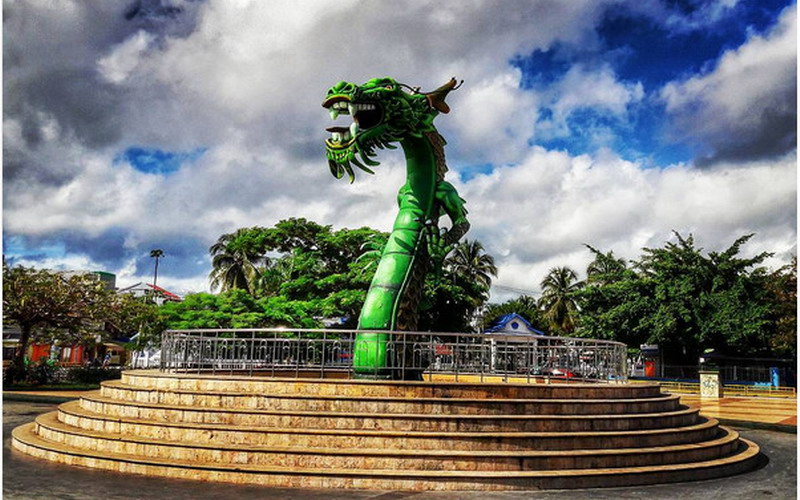In the midst of the Midsummer’s day, or midsommarsdag as known in Sweden, and right at the coast of the southernmost point in Sweden stood a cottage so ordinary in Skåne (southern Sweden). Close to it, a juniper and moss-shaded green, and quite an ordinary forest shielded the fierce wind from the Baltic sea that day. However, what lay deep in the forest was a trädkoja, which in Swedish translates to a treehouse, but what was strange about it, wasn’t because it stood out, but rather because it blended right into the birches and ashes. You see, the treehouse was built with natural materials around it, no tools were needed in the construction except a saw, but there was a ladder from an old playground nearby. It gave a new meaning to sustainable architecture. Cousins, siblings, aunts and uncles from all over Skåne came, and either admire or aided the construction. Despite the few days when the logs from the second level fell down on unsuspected visitors or even one time when the whole structure broke down, we managed to build it up again and make it even sturdier. Hence, this expresses one of the fundamental passions that I have which has somewhat woven intertwined with each other is the environment and design.
Furthermore, in terms of academics, I don’t have any huge goals at the moment. I feel like the effort that I am putting in now is sufficient, sometimes even too much. Therefore, my “goal” in the academic side of things is to continue that effort and work that I am doing in academics. Of course, if there is anything that I in the future have trouble with, I will do as I have always done, to work hard onto improve that particular topic. As mentioned before my two passions are the enviornment and the design, or a least so far. Likewise, for service I am going to continue in Grade 10 to do the services that relate to the environment which are Climate Change and Clean Energy (college service), Urban Gardening (college service, East Solar Initiative (service started by a student) and Gili Eco Trust (Global Concern). Moreover, I used to play a great deal of sports, and a range of sports as well. I have been trying to balance academic and activities as well as service but it hasn’t worked out as I wanted to. Although I wish I could compete in a team, I don’t have time for that. This is why I have decided to do Floorball on Wednesdays and Badminton on Saturdays. Thus, for next year, I will do a similar sort of arrangement. In order to look slightly beyond my time in High School, I think it is safe to say, or at least at the moment, that my plan is to enroll in a university that considers environmental sustainability, and study/purse architecture (specialising in sustainable and “green” architecture) or something that relates to the environment. This isn’t the final plan, but I suppose it is good enough for now. The university that I would enrol in would probably be in Sweden, as I am Swedish and because they are free there, or possibly Canada, as I have a Canadian passport (my father’s Canadian)
I am not that type of person who wants to be the best at everything (although it may seem like it to some people, I really wish it weren’t true that I am good (not perfect or best) at a lot of things) or the person who does extra work, doing internships or anything like that. However, maybe I should consider doing some work that relates do what I am passionate about. In addition to that, at times, I feel like I have too many services that I commit to. Furthermore, I am in the High School Symphony Orchestra because I like that type of music and playing the cello (although I really want to try some jazz instruments because that is also something I’m interested in). In fact, I had real trouble deciding whether to do RM (resistant materials) or Music. I want to be that type of person at the High School concerts who is in the background and plays a range of instruments. My goal for music is to play in the orchestra for High School Musical next year and to perhaps try a range or a different instrument, and be more involved in the school concerts.
For me, except for my passion and the importance of environmentalism, I think that one of the most profound belief that I have is that everyone should have some purpose, something that is significant, even it is small, it has to have some impact. Of course, I would hope that one would do something good, but even it is bad, it should be significant. I don’t believe in any higher deity, but I feel like if your alive, you have to do something that is worthwhile. In the back of my mind, I sometimes feel hatred toward obnoxious jerks or if I feel like some person doesn’t care about the environment or other people. That they are selfish or that if they didn’t exist (I am sorry about this, but this is truly how I feel sometimes) nothing would change, or that the world would be a better place. Of course, if all humans didn’t exist, the world would definitely be a significantly better place, but I think you know what I mean. Thankfully, I don’t lash out or do something mean to them, but this is a problem but also a deep belief that I have.









